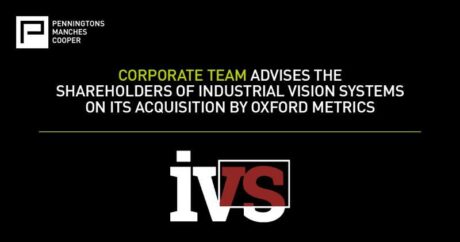
Coronavirus: Is the roadmap to easing lockdown restrictions a road to ruin for directors?
Directors of companies have been facing, and continue to face, extremely challenging circumstances due to the financial impact of the coronavirus pandemic. The decisions they have taken through the pandemic to date have been made against a backdrop of unknowns: unknown closure durations, unknown projections and uncertain futures.
This has meant that directors who acted cautiously, took advice and recorded those decisions through board minutes, which would be regularly reviewed, could take some comfort that should the company then hit difficulties, they would be able to rely upon that advice, and their recorded decisions, to defend themselves from personal liability in the event of insolvency. That has now changed, and directors need to act accordingly.
What has changed?
Boris Johnson’s statement to the House of Commons on 22 February 2021 on the ‘roadmap to cautiously ease lockdown restrictions’, may be seen as crystallising the backdrop against which directors’ decisions are, or are not, made. It is likely that it will, at the least, form a key part of the factual matrix which is considered within litigation relating to decisions taken by companies and their directors at or around this time. For example, a business which operated nightclubs and had continued to trade based on the directors’ decision that they believed it would be possible or reasonably likely that nightclubs would be allowed to open by 1 April 2021 is unlikely to be tenable, following the announcement that this could not take place before 21 June 2021 at the earliest.
When should directors be worried and seek advice?
In short: when a business is entering serious financial difficulty, when it cannot pay its creditors in the usual way, its liabilities are greater than its assets, or creditors take steps to enforce a debt due by the company. The exact moment in time this is triggered is hard to pinpoint, but the safest course of action is to seek advice when there are any signs of this being likely. The key to protection is speed: directors cannot protect themselves after the event; protective measures must be carried out before trading continues in order to provide any effective protection.
What are the risks facing directors?
The main potential claims against directors will be brought following a formal insolvency procedure (administration or liquidation). The claims are usually brought by the liquidator or administrator but can be assigned to third parties. That is why directors should seek advice if there is any possibility that such a procedure may be or become necessary.
The temporary relaxation on wrongful trading provisions which were introduced by the Corporate Insolvency and Governance Act 2020 are currently set to expire on 30 April 2021. In any event, in practical terms, if directors are liable for wrongful trading, there is a very high likelihood that they are also liable for misfeasance and so will not be protected from exposure.
WRONGFUL TRADING SECTION 214 AND 246ZB INSOLVENCY ACT 1986
The claim:
- wrongful trading occurs where a company has gone into insolvent liquidation or administration, and at some time before the company’s liquidation or administration, the directors knew or ought to have known that there was no reasonable prospect of the company avoiding insolvent liquidation or administration; and
- they failed to take every step after that with a view to minimising potential losses to the company’s creditors;
- a defence may be available if directors can demonstrate that they took those steps possible to minimise losses;
- the court will look at the general knowledge, skill and experience that could reasonably be expected of a person carrying out that function (an objective test) and the knowledge, skill and experience that the individual actually possesses (the subjective test). A higher standard is likely to be required by professionals such as accountants.
The penalty:
- if found liable, the court can order the individual to make a contribution to the debts or liabilities of the company. This is usually calculated with reference to the amount that the net assets were depleted by the individual’s actions (or lack of them). This is especially important in the current context where losses are likely to be high.
MISFEASANCE SECTION 212 INSOLVENCY ACT 1986
The claim:
- in broad terms, misfeasance is a claim triggered by a breach of the duties held by directors listed in sections 171-177 of the Companies Act 2006, and is a very wide claim. It is usually brought together with a claim for wrongful or fraudulent trading;
- it is unlikely to succeed if individuals can demonstrate that they acted reasonably and honestly and it would be fair to excuse them from liability. It does not require a positive act and failing to act may be used as evidence against directors;
- it can be brought against a wide range of defendants including former directors and anyone involved in the management of the company’s affairs – you can be at risk even if not a formal director.
The penalty:
If found liable for misfeasance, the defendant can be ordered to:
- repay any misappropriated money or property to the company, with interest; and/or
- compensate the company by way of contribution to the company’s assets.
FRAUDULENT TRADING SECTION 213 AND 246ZA INSOLVENCY ACT 1986 AND SECTION 993 COMPANIES ACT 2006
The claims
- fraudulent trading is a criminal offence and carries criminal sanctions;
- it is also a civil claim under section 213 if the business of the company was found to have been carried out with the intent to defraud creditors, defraud creditors of any other person or business, or for another fraudulent purpose;
- it does require an element of dishonesty, unlike wrongful trading, and there is no defence available.
The penalty:
- if found liable, the individual must compensate for the loss caused by the fraud, and the court’s powers here are wide.
Director disqualification
Administrators and liquidators must report to the Insolvency Service on the conduct of all directors who have held office in the three years preceding the insolvency. A negative report can lead to the individual being disqualified as a director, and the conduct which can lead to a negative report is very wide.
If a disqualification order is made, that individual can be disqualified from being a director of, or being involved in any way with the promotion, formation or management of a company without the court’s permission for up to 15 years.
What action can directors take now to mitigate the risk?
Identify the level of risk and, as a board, formulate a strategy for approaching the problem.
Hold and minute regular board meetings, and do so with professional assistance; board minutes form a primary way of demonstrating that you considered and assessed all risks and decisions in the correct way and acted diligently and reasonably in doing so. Their correct formation is crucial.
Seek advice: insolvency lawyers and insolvency practitioners can guide you as to what steps you need to take, both procedurally and practically, to protect your position as a director.
More in Health

Activate Business School launches new education programme for aspiring health leaders
Activate Business School is delighted to announce it is launching a new award to help develop and train health and care staff across Buckinghamshire Oxfordshire and Berkshire (BOB).

CEO FOCUS: Take Your Best Shot
A fascinating interview with Thomas Hal Robson-Kanu, international professional football player and founder of The Turmeric Co, one of the UK’s fastest growing health brands.

Blenheim to Host European Transplant and Dialysis Games
Blenheim is set to host three days of competition as part of the European Transplant and Dialysis Games which will arrive in the UK next week (23rd-25th August) for the first time ever.
From this author

PENNINGTONS MANCHES COOPER ADVISES THE SHAREHOLDERS OF OXLID ON ITS ACQUISITION...
The corporate team at Penningtons Manches Cooper has advised the shareholders of UK-based OXLiD on its acquisition by AIM listed Anglo-Australian battery innovator, Gelion.

PENNINGTONS MANCHES COOPER APPOINTED AS LEGAL ADVISOR TO ADVANCED RESEARCH +...
Penningtons Manches Cooper’s Birmingham and Oxford offices have been appointed as legal advisors to the Advanced Research + Invention Agency (ARIA), a new R&D agency built to unlock scientific and technological breakthroughs to benefit everyone.

PENNINGTONS MANCHES COOPER ADVISES THE SHAREHOLDERS OF MACHINE VISION TECHNOLOGY SPECIALISTS...
The corporate team at Penningtons Manches Cooper has advised the shareholders of machine vision technology specialists Industrial Vision Systems on its acquisition by Oxford Metrics PLC (LSE: OMG).

